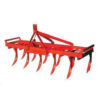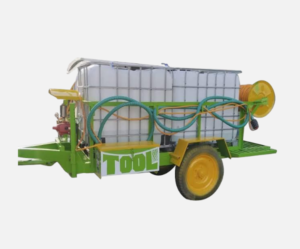

Rigid Loaded Cultivator
A rigid loaded cultivator is a type of agricultural implement used for soil cultivation and preparation before planting. It typically consists of a frame with multiple rigid tines or shanks attached. These shanks are designed to penetrate the soil and break up compacted layers, allowing for better water infiltration, root penetration, and overall soil health. Here are the key features and components of a rigid loaded cultivator:
Key – Features :
- Frame: The frame provides the structural support for the cultivator and holds the various components together. It is usually made of sturdy materials such as steel to withstand the stresses of field operation.
- Rigid Tines or Shanks: The cultivator is equipped with rigid tines or shanks that penetrate the soil to break up compacted layers and loosen the soil. These shanks are typically spaced evenly across the width of the cultivator and may have replaceable points for easy maintenance.
- Spring-Loaded Design: Some rigid loaded cultivators feature a spring-loaded design, where each shank is mounted on a spring mechanism. This allows the shanks to flex slightly upon encountering obstacles such as rocks or roots, reducing the risk of damage to the cultivator and tractor.
- Depth Control: Many cultivators offer depth control mechanisms that allow operators to adjust the depth at which the shanks penetrate the soil. This ensures consistent cultivation depth across the field and allows for customization based on soil conditions and crop requirements.
- Width and Configuration: Rigid loaded cultivators come in various widths and configurations to suit different farm sizes and tillage requirements. They may range from smaller, single-row units for small-scale operations to larger, multi-row cultivators for commercial farming.
- Attachment: The cultivator is typically attached to a tractor or other power source using a hitch mechanism, such as a three-point hitch or drawbar. This allows for easy transport and maneuverability in the field.
- Transport Wheels: Some cultivators may be equipped with transport wheels for easy movement between fields and transport on roads. These wheels can be raised or lowered as needed during operation






